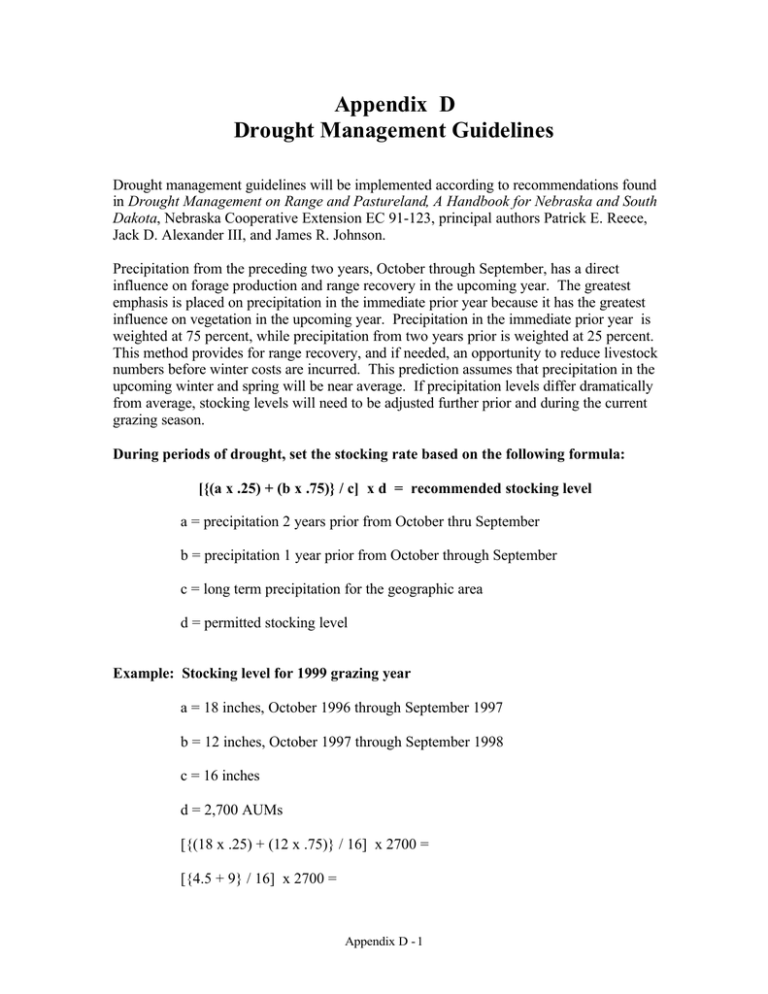Appendix D Drought Management Guidelines
advertisement

Appendix D
Drought Management Guidelines
Drought management guidelines will be implemented according to recommendations found
in Drought Management on Range and Pastureland, A Handbook for Nebraska and South
Dakota, Nebraska Cooperative Extension EC 91-123, principal authors Patrick E. Reece,
Jack D. Alexander III, and James R. Johnson.
Precipitation from the preceding two years, October through September, has a direct
influence on forage production and range recovery in the upcoming year. The greatest
emphasis is placed on precipitation in the immediate prior year because it has the greatest
influence on vegetation in the upcoming year. Precipitation in the immediate prior year is
weighted at 75 percent, while precipitation from two years prior is weighted at 25 percent.
This method provides for range recovery, and if needed, an opportunity to reduce livestock
numbers before winter costs are incurred. This prediction assumes that precipitation in the
upcoming winter and spring will be near average. If precipitation levels differ dramatically
from average, stocking levels will need to be adjusted further prior and during the current
grazing season.
During periods of drought, set the stocking rate based on the following formula:
[{(a x .25) + (b x .75)} / c] x d = recommended stocking level
a = precipitation 2 years prior from October thru September
b = precipitation 1 year prior from October through September
c = long term precipitation for the geographic area
d = permitted stocking level
Example: Stocking level for 1999 grazing year
a = 18 inches, October 1996 through September 1997
b = 12 inches, October 1997 through September 1998
c = 16 inches
d = 2,700 AUMs
[{(18 x .25) + (12 x .75)} / 16] x 2700 =
[{4.5 + 9} / 16] x 2700 =
Appendix D - 1
[ 13.5 / 16] x 2700 =
.84 x 2700 = 2278 AUMs recommended stocking level
If the weighted average precipitation for the previous two years exceeds 100 percent of longterm average, the recommended stocking level cannot exceed the permitted stocking level to
allow for recovery of the rangeland vegetation or other resource needs.
Appendix D - 2



